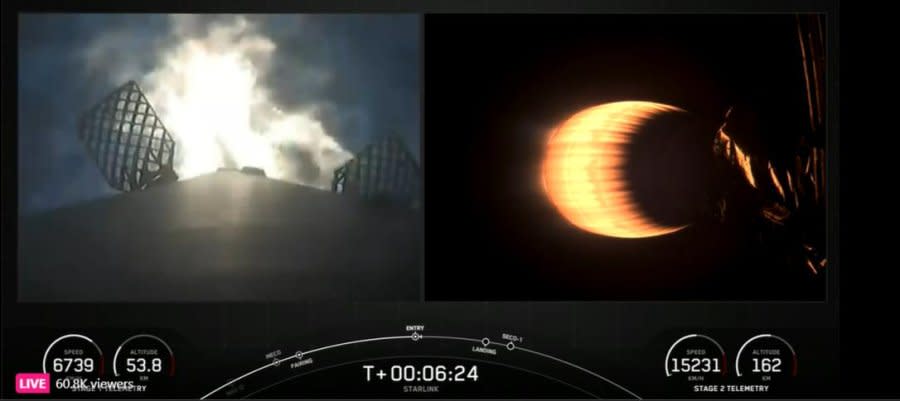SpaceX bicoastal launches Thursday, adding to satellite megaconstellation

May 3 (UPI) -- SpaceX launched another group of 23 satellites from Kennedy Space Center on Thursday night via a Falcon 9 rocket, adding to the Starlink megacluster of Internet satellites now in low-Earth orbit.
The launches have become nearly routine as have the return of reusable fuel cell booster rocket to a drone awaiting below.
Thursday night, the booster, guided by short rocket bursts, returned from its mission after spending a million pounds of kerosene fuel in about 8 minutes, deployed triangular legs and settled gently on the drone ship called A Shortfall of Gravitas.
It was this booster's 19th mission, according to SpaceX. The 19th reusable mission for the booster is just one shy of the company's reuse record, which was set last month.
Starlink, SpaceX's broadband company, currently has more than 5,800 active satellites in low-Earth orbit, making up the Internet satellite constellation.
The Florida launch was the second half of a SpaceX double header Thursday. On the other side of the country, a Falcon 9 carried a pair of two Earth-observation satellites for a company called Maxar from California's Vandenberg Space Force Base.
SpaceX has launched 43 orbital missions so far this year. 29 of those missions have been devoted to building out the Starlink megaconstellation.

